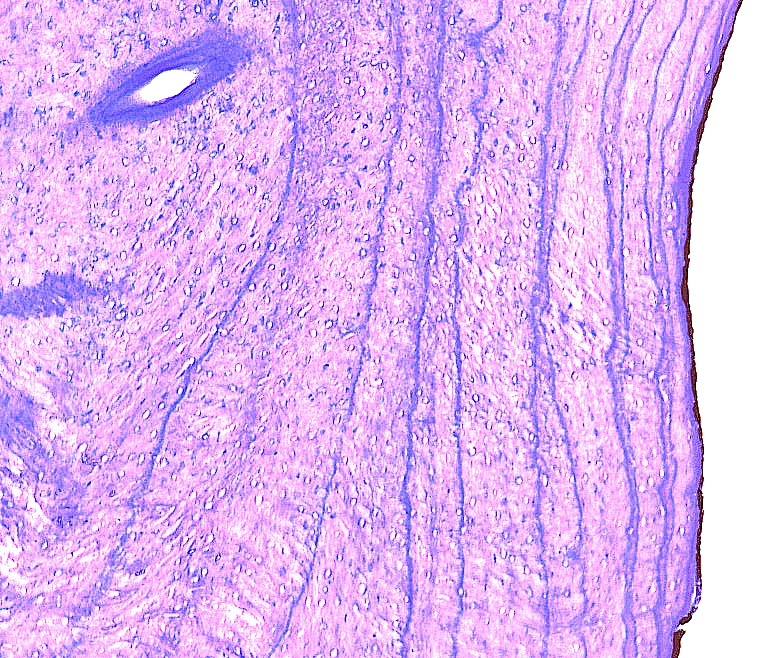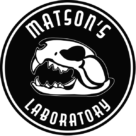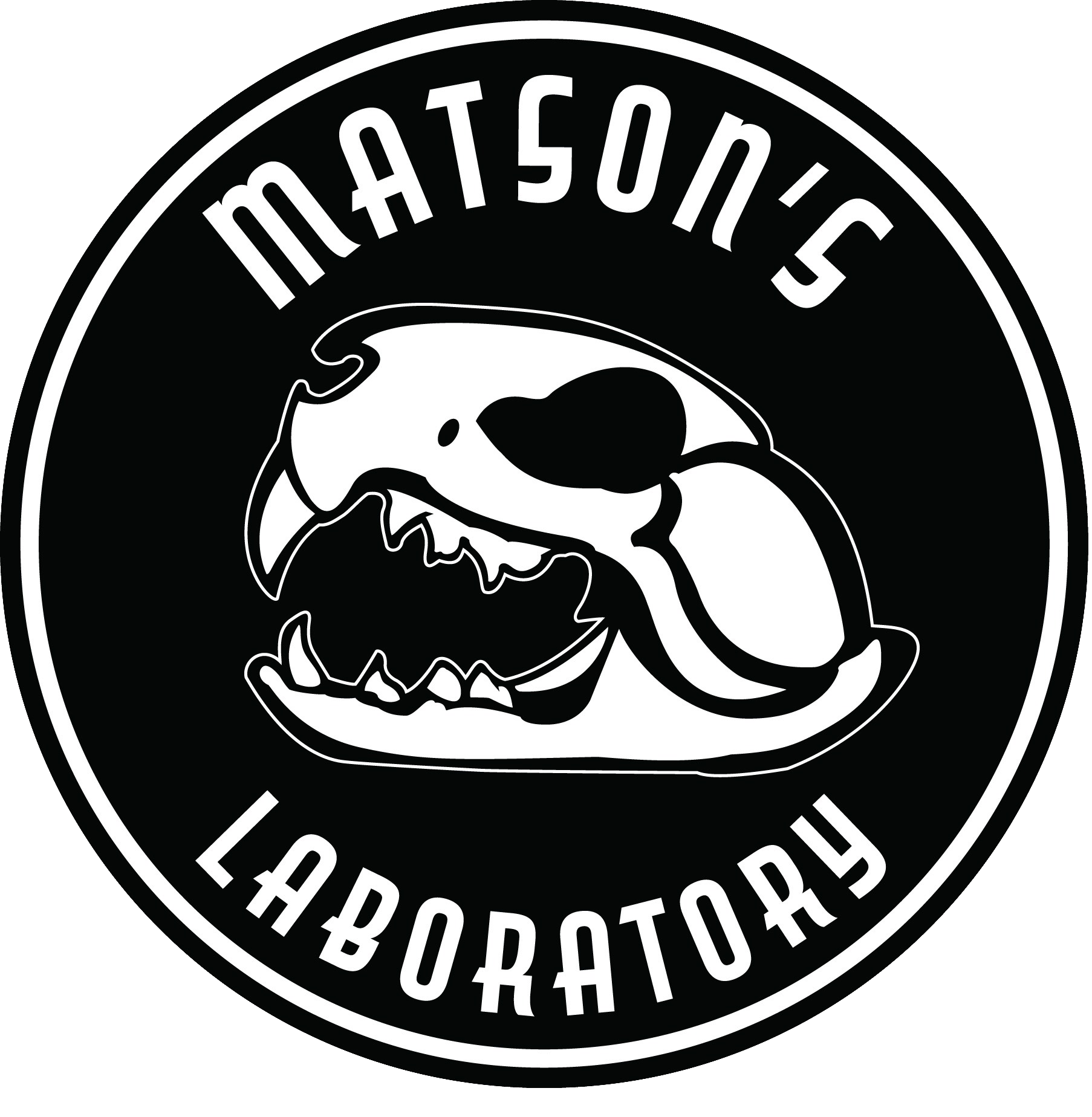Reproductive History Reconstructions
Hunting black bear helps provide researchers with teeth that Matson’s can use to create valuable reproductive history reconstructions.
Reproductive History
Reconstructions in Black Bears
The years in which female black bears successfully rear cubs can sometimes be identified by the presence of characteristic indicators in tooth cementum. Cub rearing is accompanied by a diminished production of the lightly-staining cementum of the spring and summer growing seasons. Pictured below is a black bear PM1 tooth section that shows strong evidence for cub rearing.
Matson’s has developed proprietary criteria to identify cub rearing based on microscopic examination of sows with known cubbing years. We have successfully applied these criteria to reconstruct reproductive histories for thousands of adult female black bears. This reproductive data is vital for biologists and researchers to better understand black bear populations. If you are a hunter that enjoys hunting black bear, please check with your local wildlife agency to see how you can help.


Applications & Considerations
The identification of cub rearing years permits an estimate of the age of first reproduction as well as reproductive potential. However, not all reproductively active female black bears have cementum with identifiable cub year indicators. Indicators often become less evident with age, preventing a full assessment of an older bear’s reproductive history even though indicators are present in younger years. To date, the technique only appears to be useful for black bears, not other bear species.
Reproductive history reconstructions are approximations. The cementum indicators for the first years of cub rearing are usually the most evident ones, and therefore early reproductive history may yield the most useful data from the method. Use the largest possible sample size to estimate the population’s reproductive potential based upon cementum evidence. The estimate will undoubtedly be low, because indicators are less visible and likely more often missed in the cementum of older bears.
Since a larger sample size can help yield more reproductive history reconstructions, we advise biologists and researchers to promote this research to individuals hunting black bear and let them know how they can help by providing teeth from harvests. Hunting black bear and submitting their teeth will help play a crucial role in understanding the reproductive potential of individual populations.
Brown Bear Reproductive Histories
Matson’s lab (Matson et al. 1998) studied the potential for reconstructing reproductive histories in brown bears. It was concluded that brown bear reproductive histories cannot be reconstructed using the method shown to be successful for black bears. These findings were presented in a poster at the Eleventh International Conference on Bear Research and Management in Gatlinburg, Tennessee. Visit the “Other Publications” portion of the News & Publications page to learn more.


